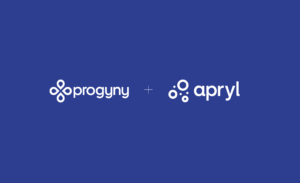As we plan for the start of a new year, it’s safe to say that the world of work has changed dramatically. In fact, many organisations have focused on embedding changes in working patterns, expectations and rewards as a way to keep top talent and improve employee wellbeing, whilst providing ways to help employees with the increased cost of living.
So if work is ongoing to ensure employees feel secure, looked after, and valued, are the benefits you currently offer still relevant as we enter 2023? Or are there more appropriate employee benefit trends you should be taking notice of?
Here we share the top trends in employee benefits for 2023 and beyond.
2023 employee benefit trends
Offering employee benefits is about valuing and rewarding your people. It’s about becoming a place where people want to work and providing them with tangible advantages that enhance their life experiences. So what trends are we seeing in employee benefits this year and into the future, and what benefits help to improve company culture?
Full hybrid working
If the pandemic highlighted anything, it’s that the majority of employees can, and will, work effectively from home.
- In the AON 2022 Benefits and Trends Survey, over 70% of respondents have seen an increased emphasis placed on hybrid working.
- Over 50% of employees agree they would prefer to work from home at least part of the time.
It’s clear from these stats alone, that employees are demanding the freedom to choose where they work, when they want and employers who are not offering this benefit may see talent leave to take a role elsewhere with the benefit available.
In fact, offering flexible hybrid work arrangements is now considered the number one benefit that employers can provide outside of salary and standard benefits. The trial of a 4-day working week, highlights how organisations are beginning to embrace hybrid, flexible working to benefit their employees and retain staff.
But what advantage does this employee benefit trend mean for organisations?
- Improved staff retention rates – companies who refuse to offer this benefit are losing employees to companies who are willing to give them what they want.
- Access to a larger pool of candidates for open vacancies – organisations that adopt hybrid working will also have many more locations that they can hire from.
- Reduced overheads for office space – if you have less people in the office, it costs less to run…
- Greater visibility for senior leadership – with virtual meeting rooms having no real space constraints, ensuring senior leaders can interact with everyone at the company at once is easier than ever.
- Increased employee productivity – hybrid working improves mental well-being, and employees who are happy and well balanced are more productive.
Fertility & reproductive benefits (as a part of improved DE&I)
Now that the importance of health and mental well being is recognised by employers as vital for a productive and proactive workforce, organisations are looking beyond Employee Assistance Programmes (EAPs) and wellbeing days.
An area with a great upward trend is fertility and reproductive benefits. A recent survey from Mercer found that 42% of large US companies with over 20,000 employees covered the cost of IVF treatment in 2020.
Fertility benefits have been popular in the US for a while, but Europe and the UK are only starting to catch up. Getting on board with this benefit trend brings huge advantages to the entire workforce, not just women.
Infertility is becoming an increasingly common reality for many regardless of age, gender or sexual orientation.
- 1 in 7 heterosexual couples in the UK struggle to conceive
- 40% of fertility issues are male-related
- 6 in 10 LGBTQ+ couples want to start a family
- BIPOC employees are 25 times less likely to seek fertility treatment
Fertility benefits are therefore inclusive and support DEI objectives, as they assist those facing medical discrimination and poor health outcomes. Starting a family is a right rather than a privilege but it’s not always straightforward.
By offering benefits alongside a fertility leave policy, organisations illustrate that their employee wellbeing is top of mind, they maintain and improve employee engagement rates, loyalty, and retention, so really getting on board with this benefit trend is a bit of a no-brainer!
Mental health and wellbeing
Implementing and (more importantly) maintaining a formal strategy to introduce health, wellbeing and workplace resilience benefits is a key trend for businesses as we move into 2023 and beyond.
Deloitte’s Global Human Capital Trends survey showed that nearly 80% of respondents identify employee wellbeing as important or very important to their organisation’s success. 95% of employers agree that they have a responsibility for the health and wellbeing of their workforce and acknowledge that low level of wellbeing provision will have an impact on many aspects of business performance.
Providing options such as counselling or therapy, gym memberships and nutrition, yoga and smoking cessation through both physical and virtual setups will see employers gaining £5 for every £1 spent in reduced absence, presenteeism and staff turn over!
Another element to this benefits trend is to provide greater mental health education to employees to help them understand how to spot someone who may be struggling, understand their own emotions, and how to assist themselves and others with mental health issues.
Providing benefits that really matter
In the past, employers offering subsidised employee lunches, travel card schemes and even ping pong tables in the office were incredibly popular. However, in the world of 2023 and beyond, with more and more employees embracing the ability to work from home or in a hybrid model, providing benefits that really matter is regarded much higher than gimmicks.
This shift in benefit trends sees employers offering budgets for at-home office equipment, subsidised child care schemes, discounts on groceries or assistance with home utilities as a way to support their workforce and place an emphasis on understanding the work life balance.
It’s clear that the 2023 employee benefits trends are focused on ensuring a better overall life experience than they ever have been before. By shifting approaches to ensure employees are able to work and live in a more balanced way, employers will see a higher level of engagement, retention and productivity.
To find out how we can help your organisation meet the employee benefit trends of 2023, book a demo today.




